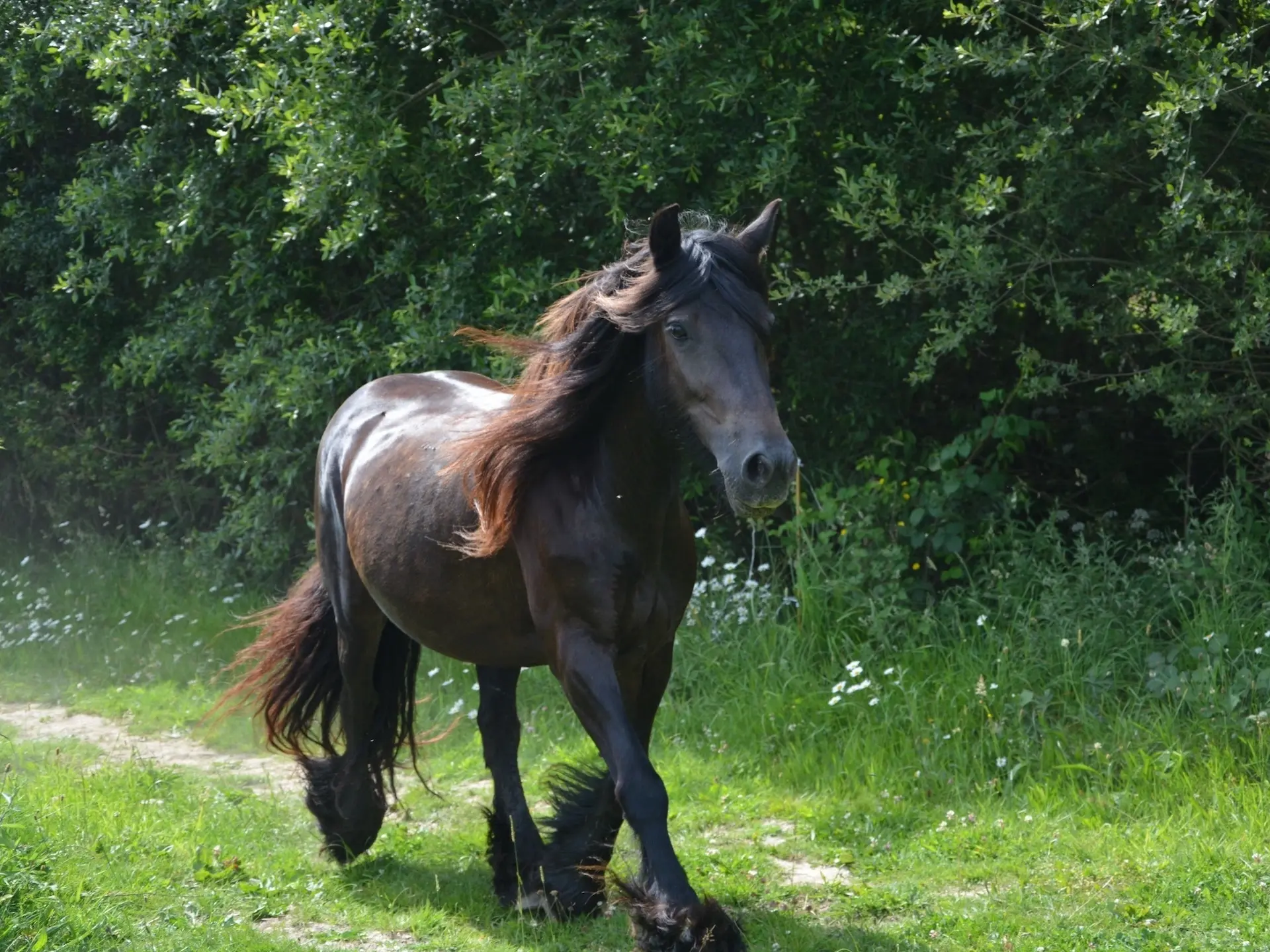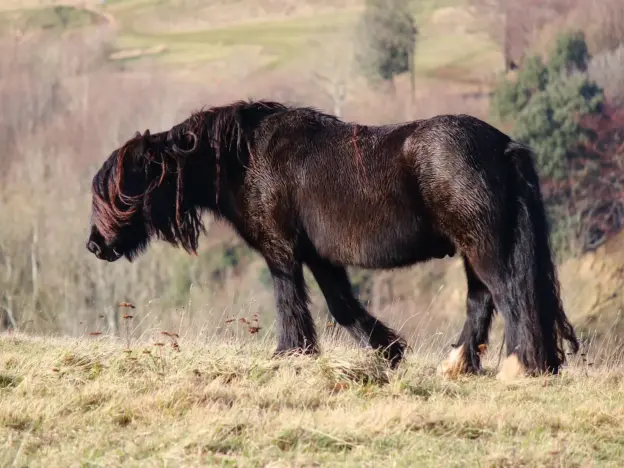Intro
Most of the ponies found on the British Isles made their way across the English Channel when it was still a marsh, as long ago as 1500 BC. Skeletal evidence shows that these animals looked like a cross between Tarpan and present day Exmoor.
Origins
As these ponies came over they distributed themselves to different islands and therefore different climates and environments. The pockets continued to breed independent of one another and thus formed the basis for the different pony breeds found on the British Isles today.
The Romans invaded Britain around 55 BC and found the native ponies to be unsuitable for their working needs (no matter how strong or hardy they were). Friesian animals were imported to support the Romans and when the Romans withdrew from Britain they left some 1,000 Friesian stallions in northern England. These studs were bred to local mares and became the foundation of the Fell Pony breed.
The Fell Ponies stayed true to type for a long time and were seldom cross bred. They are good trotters, and became popular in the late 18th century as trotting rose in popularity. The official Fell Pony Society was formed in 1912.
According to DAD-IS they are at risk and as of 2021 there were only 248 left. The Equus Survival Trust lists them as vulnerable with an estimated global population of over 6500.
Features
Average height 13- 14 hands
Friesian blood is often evident in their conformation
Physique
Head is small with a straight profile
Eyes are lively
Ears are small and pricked
Neck is well-proportioned and muscular
Back is long and straight
Chest is deep and broad
Legs are sturdy and well muscled with feathering at fetlocks
Mane & tail are full and heavy
Traditional Colors
Temperament
Lively & intelligent
Kind and workable
Clever & bold
Use
Trotter
Pack animal
Riding pony
Show pony
Driving
Helpful Links
* all links open in a new window
Fell Pony Society
Fell Pony Society of North America
Fell Pony Society & Conservancy of the Americas
Fell Pony Museum
More Images

